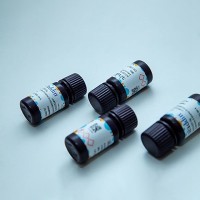Nonradioactive Photoaffinity Labeling of Steroid Receptors Using Western Blot Detection System
互联网
互联网
相关产品推荐

Influenza A H15N2 (A/Australian shelduck/Western Australia/1756/1983) Hemagglutinin Protein (HA1 Subunit) (His Tag)
¥4520

Recombinant-Mesocricetus-auratus-Probable-polyprenol-reductaseSrd5a3Probable polyprenol reductase EC= 1.3.1.- Alternative name(s): 3-oxo-5-alpha-steroid 4-dehydrogenase 3 EC= 1.3.99.5 Steroid 5-alpha-reductase 3; S5AR 3; SR type 3
¥11718

PE Antibody Labeling Kits(PE抗体标记试剂盒),阿拉丁
¥1699.90

Rat PPAR-α (Peroxisome ProlifeRators Activator Receptors alpha) ELISA试剂盒
¥960

Recombinant-Mycoplasma-pneumoniae-Oligopeptide-transport-system-permease-protein-oppCoppCOligopeptide transport system permease protein oppC
¥12124

